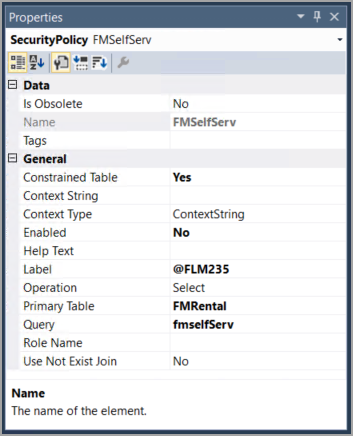Enforce permissions policy
Permissions policies are used in role-based security to grant access to users for specific purposes. The most common type of security policy originates from a query that is stored in the AOT.
A query specifies the criteria that each row or record must satisfy to be returned by using the Ranges node in its data source. The Fields node specifies which fields should be returned. You can create a field security profile to use the permissions policies to restrict access to a certain field. After you create the profile, you can assign users or teams to that profile and then set up specific read, create, or write permissions for the field.
You can use permissions policies to ensure that users can view and access all necessary areas of finance and operations apps, from pages within the navigation pane to specific buttons on a page. A new security policy is added to a project through the Solution Explorer window by following the same steps as adding a new role, duty, or privilege to a project. In the Properties window, you can specify the details of the policy, such as the query that is the basis for the policy and the Primary Table, which is the first data source in the query that is assigned to the policy. Additionally, you can specify the Context Type, which is used to determine whether the policy is applicable.
The following image shows the Properties window of the
RetailCustomer security policy that uses the
RoleName context type. The Role Name property has been filled in to specify that the RetailStoreManager role is
associated with this policy.
The following image is the Properties window of the
FMSelfServ security policy that uses the
ContextString context type. Notice that different fields
are used as you select a different context type.

